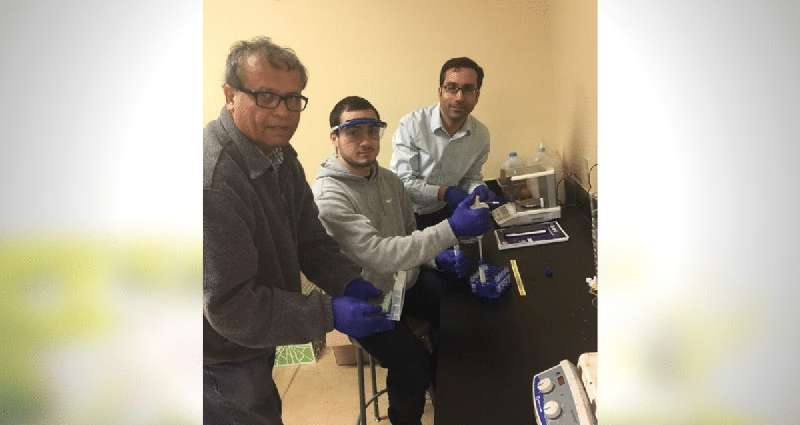A new dawn in nanoscience and technology has emerged in the Department of Engineering and Physics at Southern Arkansas University. Dr. Puska Chapagain, Dr. Lionel Hewavitharana, and Dr. Abdel Bachri collaborated with researchers from the University of Arkansas at Fayetteville and the University of Arkansas at Little Rock to discover the potential applications of gold nano dumbbells in future technologies such as nano/microelectronic circuitry, solar cells, and photonics.
The first phase of the research focused on the cost-effective synthesis of gold nano dumbbells and its characterization. This work was published in March 2021 in the journal of the American Chemical Society, ACS Omega. Recent engineering-physics graduate Alexander Golden has been involved from the initial phase of this project and is now a Ph.D. student at the University of Arkansas Fayetteville, Institute of Nanoscience and Technology.
“It is our great pleasure to publish and feature our article in such a prestigious journal, which provides us high encouragement to establish nanoscale research infrastructure at SAU,” said Dr. Chapagain of the achievement.
Dr. Hewavitharana, one of the lead research investigators, added, “After the successful completion of phase one of this project, we are very excited to start phase two, which essentially involves building an electronic device employing dumbbell rods from phase one.”
The published article is an example of SAU’s core vision involving students in top-notch research projects and providing them with the highest level of education.
“Many advances in science and technology began with understanding the properties and characteristics of materials at the most fundamental level. Research such as this will contribute to the fabrication of some of the best-performing silicon-based solar cells, enabling great efficiency in converting sunlight into electricity,” said Dr. Bachri, dean of SAU’s College of Science and Engineering.
Dr. Gregory Guisbiers and his team from UALR and Dr. Mourad Benamara from UA Fayetteville collaborated with SAU faculty on this article. They teamed up to secure funding from the Arkansas Space Grant Consortium, which NASA funds to promote research relevant to the agency’s mission.

